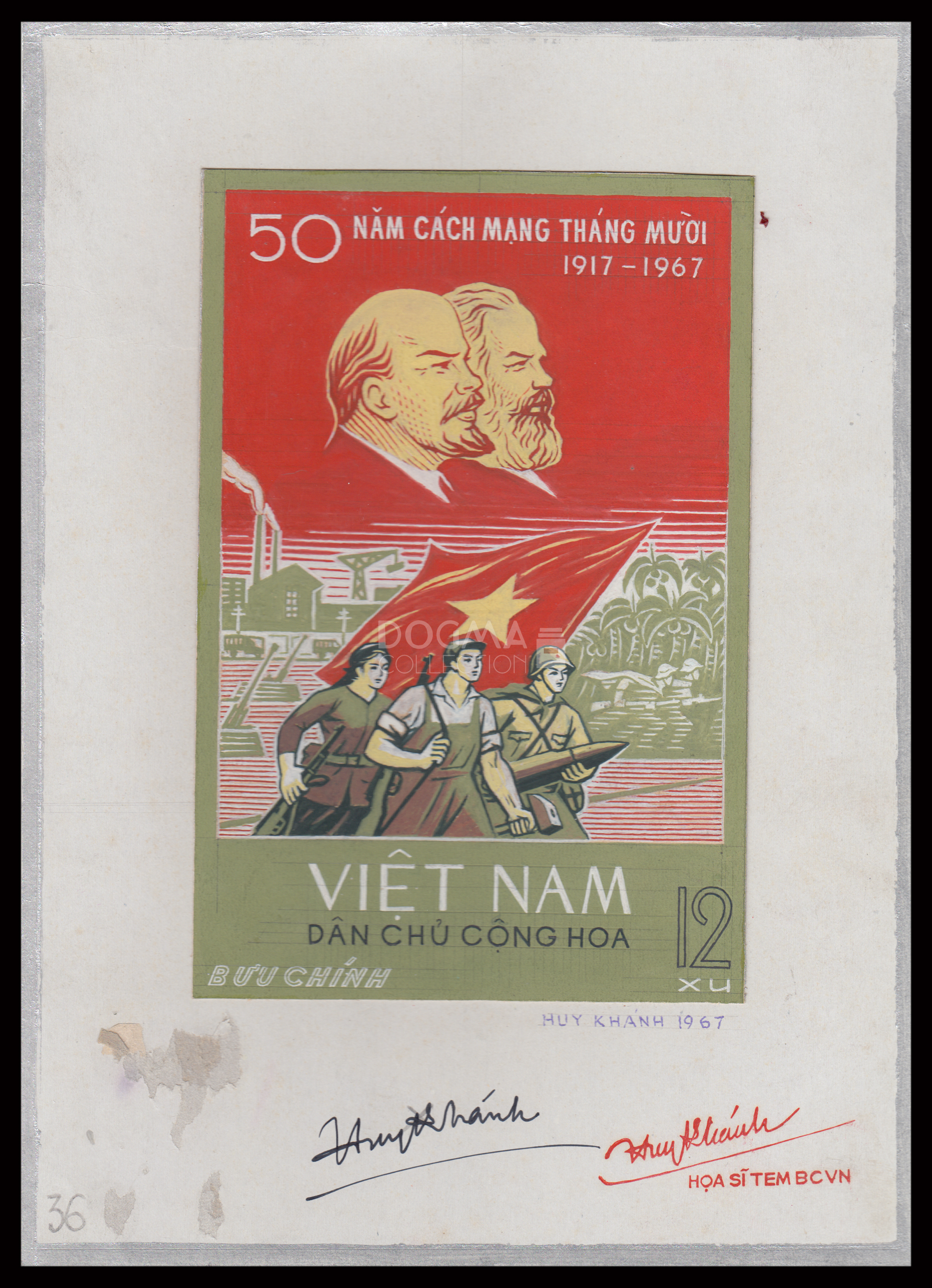The Dogma Stamp Collection
Celebrating the third National Congress of Heroic Soldiers
10th anniversary of the Geneva Accord
50th anniversary of the October Evolution
Vietnam, the birth of a nation *
Vietnamese stamps of that Southeast Asian region’s war years, 1960 to 1975, present an intriguing mixture mimicking the confusion, violence and tumultuosness of the times. There were two Vietnams –North and South– which had been administered, built up and torn apart with the help of, or despite, the involvement of many international influences, including France, Great Britain, the Soviet Union, Nationalist and Communist China, and the United States.
With Japan’s surrender at the end of World War II, Vietnam became the site of an initial tug-of-war between various political and military forces, chief among them France and the nationalistic and primarily communist-led Viet Minh coalition. After nine years of struggle France was finally forced out. On July 21, 1954, Vietnam was divided at the 17th parallel by the Geneva Conference.
A new conflict, sometimes referred to in Southeast Asia as the Second Indochina War or the Resistance War Against America, found the United States supporting the South Vietnamese regime of Ngo Dinh Diem against Ho Chi Minh and North Vietnam, which was backed heavily by China and the Soviet Union.
In South Vietnam, there also was a large population of support, particularly in rural areas, of the North. This support led to the creation in 1960 of the National Liberation Front of South Vietnam, whose military branch we know as the Viet Cong. The NLF created the flag featuring half red (on top) and half blue (on bottom) with a large yellow, five pointed star in the center.
Vietnamese stamps in the Dogma Collection are divided into four sections. The first listings are for the Republic of Viet Nam (subtitled South Viet Nam), including stamps issued from June 6, 1951 to March 26, 1975. U.S. troops left in April 1975 and the South Vietnamese capital, Saigon, fell.
The second, stamps issued between 1945 and 1948, are for the Democratic Republic of Viet Nam (North Viet Nam), subtitled the Viet Minh issues.
The next section is for the Democratic Republic of Viet Nam (North Viet Nam), including several issues that feature anti-American, anti-war, pro-nationalism and pro-unification themes. Among these are three war-era North Vietnamese official stamps from 1958 that show a soldier, a factory and crops in three denominations. Several stamps show revered Viet Minh leader Ho Chi Minh along with other Communist leaders such as Marx and Lenin.
The final section, within the Democratic Republic of Viet Nam listings, carries a subtitle “After Unification”, beginning with stamps issued on July 27, 1976, and running through today.
There is another group of about four dozen stamps issued by the National Liberation Front from the mid-1960s through the mid 1970s. Vietnamese author Ta Phi Long discusses these stamps in his dual language book “Some Features of Postal History in the Period of Revolutionary South Vietnam”.
Many of these stamps have been considered as wartime propaganda (view gallery) and have not been recognised by some catalogues, such as the Scott catalogue, as having philatelic use. However, according to Phi Long, there is evidence that shows that some were used on Vietnamese mail.
*“North Vietnam Stamp History”, by The American Philatelist staff, in “North Vietnam Postal History, Artifacts form the other Side of the Vietnam War: 1960-1975”, by Daniel M. Telelp, The American Philatelist, October 2015.



